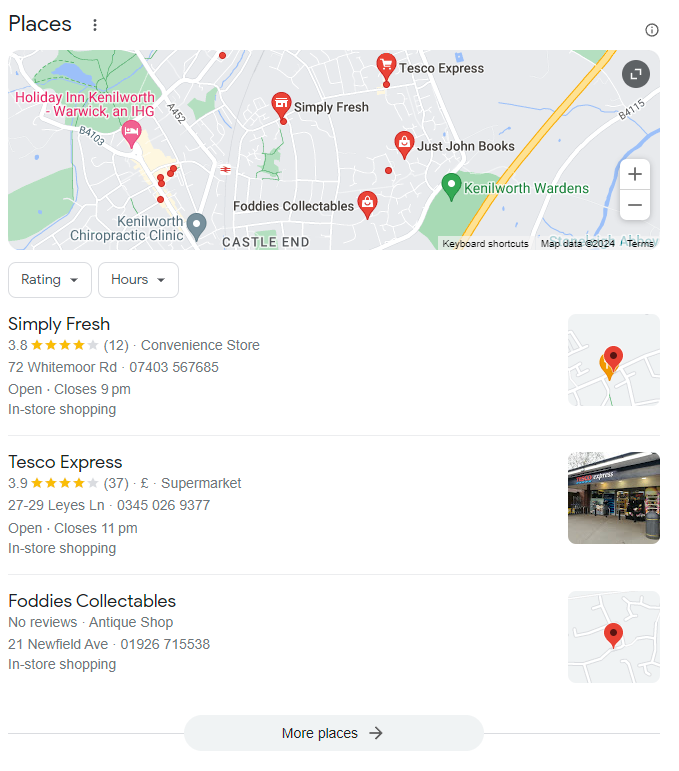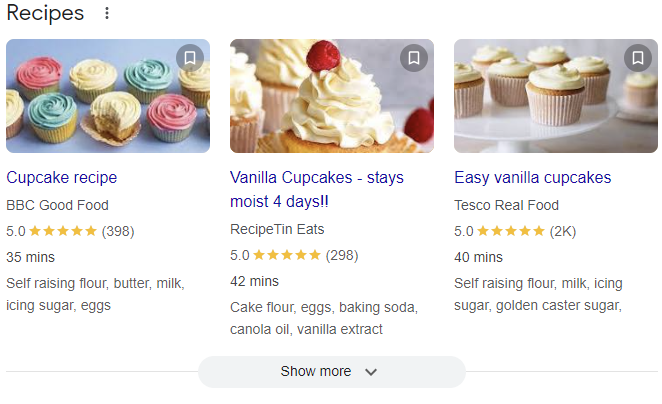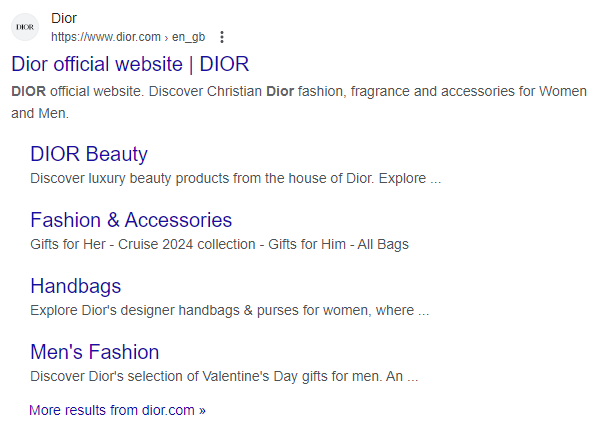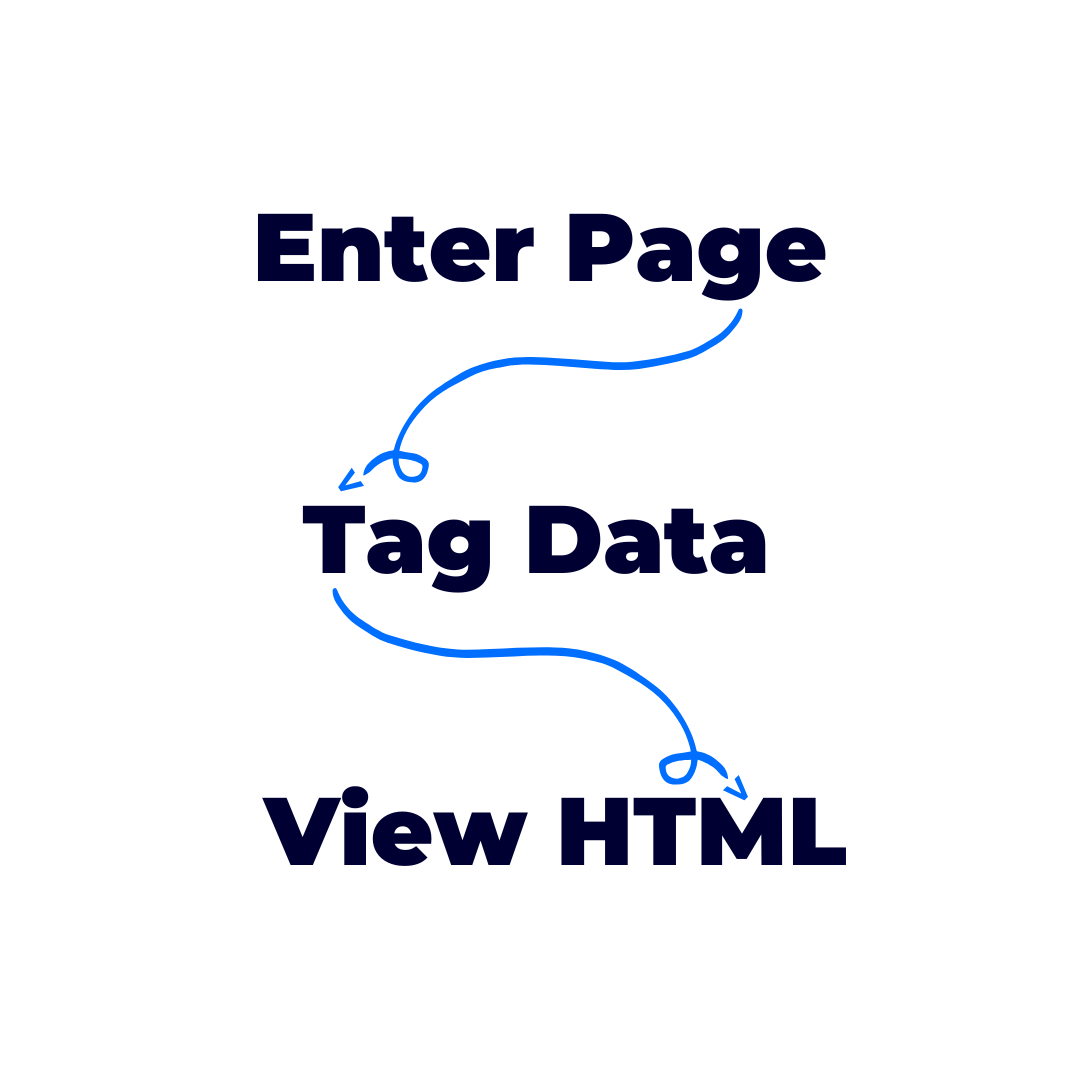Why Alt Text Is Crucial For Your Website
This is an in-depth guide that explains why Alt text is vital for your website. In this blog, we discuss topics such as what alt text is, how it...
Got a question, or need help with something?
A member of the LoudLocal team is on hand to help you.
The Brickyard, Unit 2, Queen's Rd, Kenilworth, Warwickshire, CV8 1JQ
5 Merchant Square, Paddington, London, W2 1AY
An in-depth guide to increasing SEO (search engine optimisation) and online visibility with rich results.
An incredible strategy to use when elevating your SEO is using rich results. These will improve your click-through rate and user experience, gain trust, improve where Google locates your page on the search engine, and more. In this article, we will dive into what rich results are, what the most common rich results are, how you get rich results and the benefits of using rich results.
Image-rich results benefit your business as they not only add a visually appealing dimension to your online presence but also offer a strategic advantage in driving traffic toward your website. By including images of related content, you can create an engaging preview for users, which will overall enhance your user experience as well as improve your site's click-through rate. To harness the full power of your image-rich results, make sure you make your content accessible; this is done by including alt text, descriptive titles, readable image URLs, and readable file names. It is crucial to make your content accessible for users with visual impairments; it also helps with SEO in the sense that it provides the search engine with additional context of what the content is. By including these steps in your image-rich results strategy, you will enhance the visibility of your content.

Local rich results provide users with valuable information about the geographical presence of your business. These results tell users your business map location, physical address, contact information, opening hours, and closing hours. Local rich results are highly beneficial to local businesses as they inform users of crucial information without having to navigate away from the search page. This feature improves the visibility of your business online and establishes trust and credibility by presenting details upfront.

Reviews serve as influential markers by being displayed alongside products, services, and more. Reviews play a crucial role in instilling confidence and trust in potential customers, whether they are deciding if they should make a purchase or navigate through your website. The visibility of reviews allows users to have a transparent glimpse into the experience of previous users, helping customers have a more confident and satisfying online experience.

Recipe-rich results are presented by using carousels by Google. These offer a comprehensive overview that includes essential details such as photos, reviews, a small description, a title, and durations. carousels not only improve the visual appeal of your content but also provide users with a quick, informative snapshot of the recipe. The reviews improve trust and credibility, whilst the photos and descriptions captivate the user's attention, encouraging them to click on the link. This helps users make an informed decision, with details already being present before they have to leave the search query page.

Site Links
Site link-rich results come into play when users search for an exact domain; Google can display an expanded list with up to ten different site links. These encourage users to enter your website directly into the page they were looking for without having to navigate from the home page. This method of rich results significantly generates a higher click-through rate as it contributes to an efficient and user-friendly online exploration.

Now that we've gone over the different types of rich results, you might be wondering: how can I get rich results for my content? Don't worry, we've got you covered!
Achieving rich results involves the strategic implementation of structured data, a standardised format designed to provide Google information about a page, classifying the page's content.
While developers or people accustomed to code may be able to do this by adding schema markup to the page, this can be quite a complicated process. Especially if website development is not your day job.
But some good news on that front, Google offers a valuable tool known as Structured Data Markup, which makes adding structured data to your website a significantly easier process. This tool acts as your guiding compass throughout the process. Here's a step-by-step breakdown of how you can make the most of this tool:

Selecting a Rich Result:
Begin by choosing the specific type of rich result you aim to achieve. Whether it's a review snippet, recipe card, or event listing, your selection will tailor the following steps to the unique requirements of the chosen rich result.
Attaching the Related Link:
Once you've identified your desired rich result, the tool prompts you to attach the link associated with the content. This ensures that the structured data aligns precisely with the specific page you intend to enhance for richer search results.
Tagging Data:
During this step, you will be asked to highlight the relevant text or images on your page. This crucial step allows Google to precisely understand the context and significance of the information, increasing the likelihood of your content being featured as a rich result.
HTML Code Overview:
For those who want a more deep understanding, the tool provides a preview of the HTML code. This feature enables you to inspect the code's structure, ensuring that the data is correct. With this step, you will also be able to download the code.
Once you have completed these steps, copy your new HTML markup into the source code of your web page. Every web builder is different, but plenty of guides are available for some of the most common platforms like Wix, WordPress, and Shopify.
If you have a different platform or are not confident editing your website, then I am sure if you speak with a digital marketing agency (like us!), they will help you. It is not a complicated task, and shouldn't take them very long to implement.
Always make sure you test your structured data by using the rich results test.
We have created several blogs; the latest was the Ultimate Guide to Topic Clusters. We also have a monthly blog that releases in-depth guides for different areas with your search engine optimisation, which will be updated with any necessary changes, so why not bookmark the ones out and begin booking the ones we release in the future?
If you need any help with SEO, consider booking a call with a member of our team to learn how we can help you achieve your online goals.
Thank you for reading! Best regards,
The LoudLocal Team 😊

This is an in-depth guide that explains why Alt text is vital for your website. In this blog, we discuss topics such as what alt text is, how it...

In this blog, we will examine SEO, specifically how long it takes, why, and what you can do to accelerate the progress. {% module_block module...

Throughout this blog, we will be exploring why keeping your website's content up to date is crucial, how to achieve this, and some key...